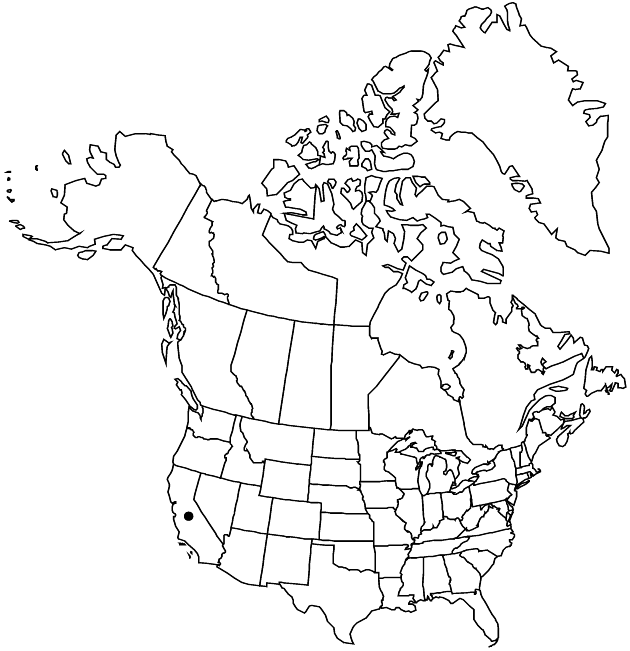Difference between revisions of "Erigeron mariposanus"
Erythea 7: 185. 1900.
FNA>Volume Importer |
imported>Volume Importer |
||
| (6 intermediate revisions by 2 users not shown) | |||
| Line 8: | Line 8: | ||
}} | }} | ||
|common_names=Foothill fleabane | |common_names=Foothill fleabane | ||
| + | |special_status={{Treatment/ID/Special_status | ||
| + | |code=E | ||
| + | |label=Endemic | ||
| + | }}{{Treatment/ID/Special_status | ||
| + | |code=C | ||
| + | |label=Conservation concern | ||
| + | }} | ||
|basionyms= | |basionyms= | ||
|synonyms= | |synonyms= | ||
| Line 25: | Line 32: | ||
|distribution=Calif. | |distribution=Calif. | ||
|discussion=<p>Of conservation concern.</p><!-- | |discussion=<p>Of conservation concern.</p><!-- | ||
| − | --><p>Erigeron mariposanus is closely similar to E. aequifolius.</p> | + | --><p><i>Erigeron mariposanus</i> is closely similar to <i>E. aequifolius</i>.</p> |
|tables= | |tables= | ||
|references= | |references= | ||
| Line 34: | Line 41: | ||
-->{{#Taxon: | -->{{#Taxon: | ||
name=Erigeron mariposanus | name=Erigeron mariposanus | ||
| − | |||
|authority=Congdon | |authority=Congdon | ||
|rank=species | |rank=species | ||
| Line 48: | Line 54: | ||
|publication title=Erythea | |publication title=Erythea | ||
|publication year=1900 | |publication year=1900 | ||
| − | |special status= | + | |special status=Endemic;Conservation concern |
| − | |source xml=https:// | + | |source xml=https://bitbucket.org/aafc-mbb/fna-data-curation/src/2e0870ddd59836b60bcf96646a41e87ea5a5943a/coarse_grained_fna_xml/V19-20-21/V20_703.xml |
|tribe=Asteraceae tribe Astereae | |tribe=Asteraceae tribe Astereae | ||
|genus=Erigeron | |genus=Erigeron | ||
Latest revision as of 20:04, 5 November 2020
Perennials, 15–28 cm; taprooted (root or caudex branches 1–4 cm, rhizomelike or caudexlike). Stems decumbent-ascending (distal branches spreading-ascending, axillary tufts of smaller leaves prominent at most nodes), sparsely to moderately strigose (hairs ascending-appressed), eglandular. Leaves cauline; blades oblanceolate, (25–)30–45 × (2–)5–8 mm, reduced near heads, margins entire, faces sparsely to moderately strigose, eglandular. Heads 1 or 2–4 (in loosely corymbiform arrays). Involucres mostly 4–5 × 8–12 mm. Phyllaries in 3–5 series, outer (midnerves prominently orange-resinous) sparsely strigose (hairs thin-based), eglandular (inner: margins broadly scarious, nearly winglike). Ray florets 18–22; corollas bluish, 5–8 mm, laminae sometimes coiling slightly at tips. Disc corollas 4–4.5 mm (throats slightly indurate, not inflated). Cypselae 2–2.4 mm, 2-nerved, faces sparsely strigose; pappi: outer of setae, inner of 28–32 bristles.
Phenology: Flowering Jun–Aug.
Habitat: Foothill woodlands, substrate unknown
Elevation: 600–800 m
Discussion
Of conservation concern.
Erigeron mariposanus is closely similar to E. aequifolius.
Selected References
None.
